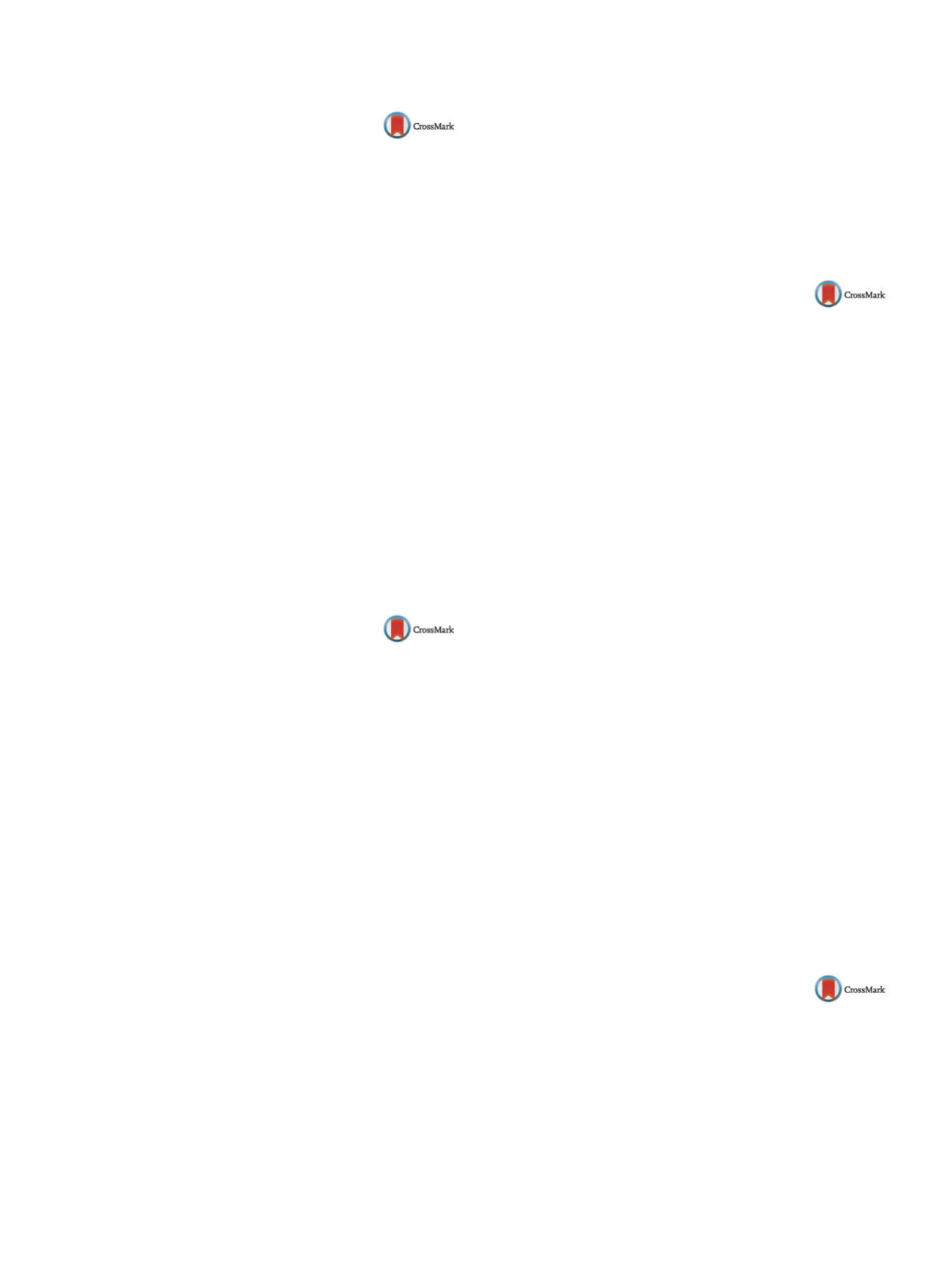

S712
25th European Congress of Psychiatry / European Psychiatry 41S (2017) S710–S771
EV0941
Multidisciplinary approach to several
mental disorders: Clinical case
P. Castrillo
1 ,∗
, R. Guijarro
2, M. Cervi˜no
11
Complejo Hospitalario Universitario de Granada, Servicio Andaluz
de Salud, Unidad de Rehabilitación de Salud Mental, Granada, Spain
2
Complejo Hospitalario Universitario de Granada, Servicio Andaluz
de Salud, Unidad de Salud Mental Comunitaria, Granada, Spain
∗
Corresponding author.
The research evidence supports multidisciplinary treatment covers
the different needs that appear in people with mental health prob-
lems, especially with long-termmental health disorders. The aim is
to emphasize the importance of integrated treatment. It means to
share therapeutic targets among different professionals. We pro-
pose that not only the therapeutical relationship between patient
and psychiatry is important, but also a collaborative approach
among different professionals. This is a descriptive study of a case
of personality disorder and an individualized treatment carried
out by different professionals from a multidisciplinary point of
view. Combined pharmacological treatment, group and individual
psychotherapy, and other therapeutic spaces are discussed in the
present study as an alternative to individual therapy sessions. She
has recovered her social and labour activity 14 years later from her
first contact with mental health. Coordination and communication
among clinical professionals would help us to improve quality of
treatment.
Disclosure of interest
The authors have not supplied their decla-
ration of competing interest.
http://dx.doi.org/10.1016/j.eurpsy.2017.01.1271EV0942
Personality traits of participants of
local armed conflicts in the remote
post-combat period
E. Epanchintseva
1 ,∗
, T .V. Kazennyh
2 , V.A. Rudnitsky
3 ,A.A. Ivanova
11
Mental Health Research Institute, Tomsk National Research Medical
Center, Russian Academy of Sciences, Clinics, Tomsk, Russia
2
Mental Health Research Institute, Tomsk National Research Medical
Center, Russian Academy of Sciences, Administration, Tomsk, Russia
3
Mental Health Research Institute, Tomsk National Research Medical
Center, Russian Academy of Sciences, Borderline States Department,
Tomsk, Russia
∗
Corresponding author.
Introduction
The problem of the psycho-injuring influence of
military operations and accidents onmentality of the person is rele-
vant and significant that is connected with existence of emergency
situations, local wars and the international conflicts.
Material and methods
We examined group of patients of par-
ticipants of local armed conflicts (69 people) in the remote
post-combat period (not less than 15 years). Most examined
persons were older than 40 years (92%). Duration of stay in condi-
tions of military operations made 6–7months in 42.0%, 12months
and more – in 43.0%; 15.0% participated in official journeys.
Clinical, clinical-physiological, experimental-psychological exami-
nation was carried out.
Results
During experimental-psychological examination reorga-
nization of the pre-morbid personality which was expressed in
increase in its structure of specific weight of pathocharacterologi-
cal disorders both as a result of acuteness of qualities of character
inherent in patients, and emergence of new forms of personal reac-
tion was revealed. In communication sharpness, maximalism of
judgments, rough behavior was typical in combatants. In some
cases, we observed existence of permanent mood disorders in the
form of a combination of intense affects of melancholy and rage.
Behavioural disturbances were expressed to rough demonstration
of affect of anger and rage as a proneness to conflict, with jam-
ming on negatively colored experiences, tendency to destructive
actions up to criminal acts, abuse of alcohol took place. In some
patients, the desire to return back to a situation of military opera-
tions was revealed. In the circle of the family, they showed hostility,
aggression, and intolerance.
Disclosure of interest
The authors have not supplied their decla-
ration of competing interest.
http://dx.doi.org/10.1016/j.eurpsy.2017.01.1272EV0943
Personality and defence mechanisms
in Takotsubo cardiomyopathy
R. Ferrara
1 ,∗
, N. Renda
21
École doctorale de Lausanne, Department of Biology and Medicine,
Roma, Italy
2
University of Palermo, Department of Experimental Biomedicine
and Clinical Neurosciences, Palermo, Italy
∗
Corresponding author.
Introduction
Takotsubo cardiomyopathy (TC) is an acute cardi-
ologic syndrome, characterized by specific symptoms and ECG,
echocardiographic and enzymatic abnormalities, similar to an
acute myocardial infarction, with no hemodynamically significant
stenosis at coronary-ventriculography.
Objective
To assess personality in TC patients in order to find
common psychopathological elements.
Methods
A series of consecutive patients suffering from TC hos-
pitalized at the Cardiology Unit of “Ingrassia” Hospital in Palermo in
2013–2014, were included in the
study.Weused StructuredClinical
Interview for Axis I and II, according to DSM-IV TR criteria. Further,
the Defense Mechanisms Inventory (DMI), used in order to explore
defensive strategies: turning against self (TAS), projection (PRO),
principalization (PRN), turning against object (TAO), and reversal
(REV).
Results
Eight women (mean age + SD: 57
±
5 years) have been
included in the study. A common element of them was a stressful
event immediately preceding the onset of TC, in particular bereave-
ment (4), armed robbery (1), infarction of a family member (1),
estrangement of a family member (1), and separation from a part-
ner (1). Although the patients did not fulfill any diagnostic criteria
for Axis I or Axis II disorders of DSM-IV-TR, they showed scores at
the SCID-II close to the limit values for avoidant and dependent per-
sonality .DMI showed, unequivocally, the common use of TAS-type
defence style.
Conclusions
Although the sample size was too small for complex
statistical analyses, nevertheless our initial findings would indicate
the presence of a common, defensive style in TC patients, and how
this syndrome may be related to stressful life events.
Disclosure of interest
The authors have not supplied their decla-
ration of competing interest.
http://dx.doi.org/10.1016/j.eurpsy.2017.01.1273EV0944
The role of identity style and locus of
control in prediction of self-efficacy
among teachers
S. Ghahari (PhD in clinical psychology) (Assistant professor of
mental health)
1 ,∗
, I. Moradi (Clinical psychologist)
2 ,B. Gheitarani (Clinical psychologist)
2,
R. Safari (Physical education teacher employed by the ministry of education)
1
Iran University of Medical Science, Center of Excellence in
Psychiatry, School of Behavioral Sciences, Mental Health, Tehran, Iran
2
Department of Psychology, Azad University, Tonekaboon, Iran
3
Iran
∗
Corresponding author.
E-mail address:
michka2004@gmail.com(S. Ghahari)


















